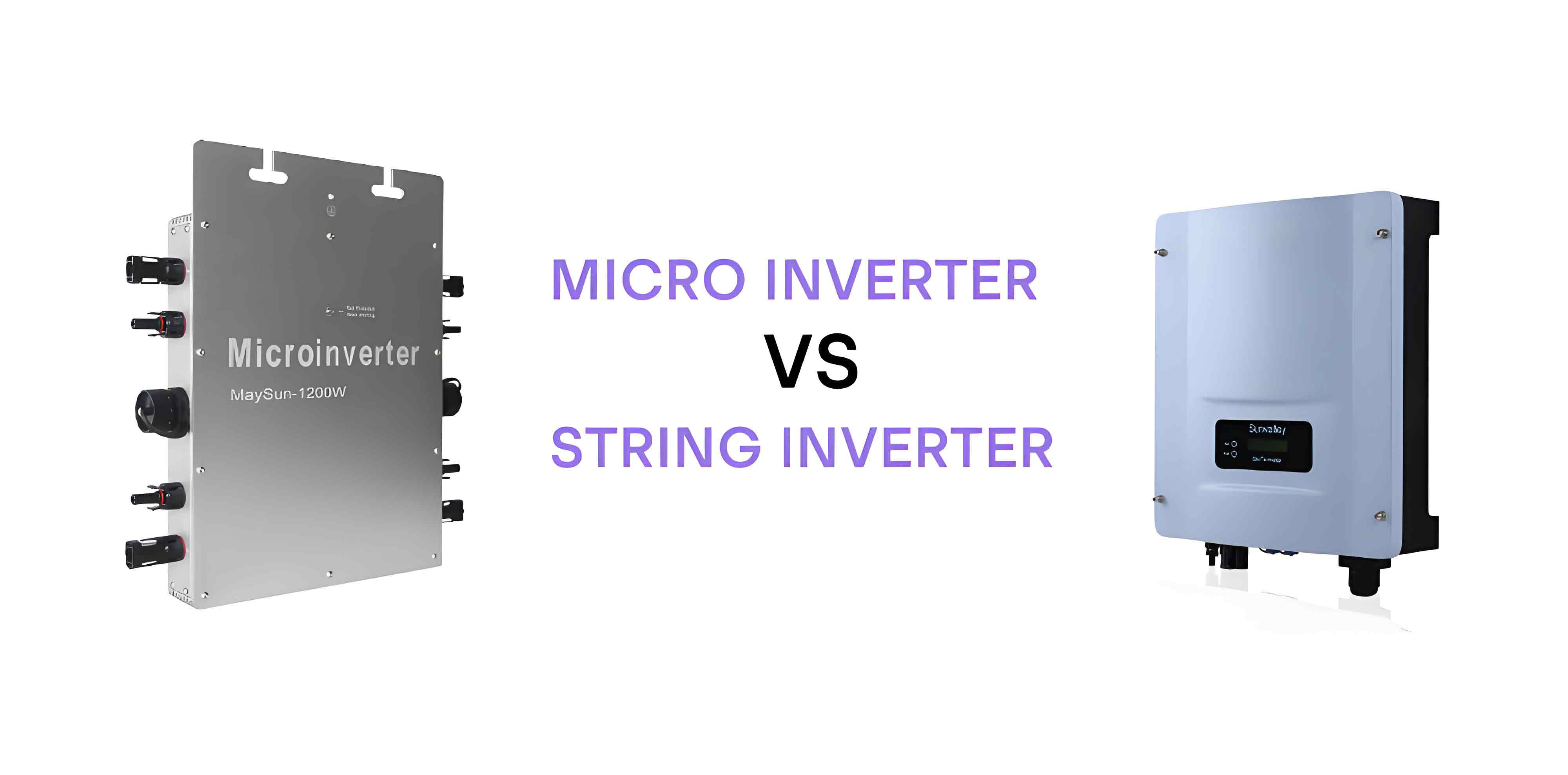
As the adoption of solar energy continues to grow, the debate between using micro inverter versus string inverter for modern solar installations has become increasingly relevant. Both types of inverters have their distinct advantages and disadvantages, which can significantly impact the performance, efficiency, and reliability of solar energy systems. This comprehensive analysis aims to provide an in-depth comparison of micro inverter and string inverter, helping homeowners and solar professionals make informed decisions.
Understanding the Basics
Micro Inverter: Micro inverter is small inverter attached to each individual solar panel. They convert the direct current (DC) generated by the panel into alternating current (AC) at the panel level. This decentralized approach allows each panel to operate independently.
String Inverter: String inverter, on the other hand, are centralized inverters connected to a series of solar panels (a string). They convert the DC electricity produced by all the panels in the string into AC. The performance of the string inverter is influenced by the weakest panel in the series.
Key Differences
1. System Efficiency
- Micro Inverter: Micro inverter maximize system efficiency by allowing each panel to operate at its optimal level. Shading, dirt, or panel mismatch does not affect the performance of other panels in the system. This results in higher energy yields, especially in conditions where shading or soiling is an issue.
- String Inverter: The performance of a string inverter is dictated by the weakest panel in the string. If one panel is shaded or dirty, it reduces the output of the entire string. This can lead to significant energy losses.
2. System Reliability
- Micro Inverter: Micro inverter enhance system reliability through redundancy. If one inverter fails, only the associated panel is affected, while the rest of the system continues to function normally. This reduces the risk of total system failure.
- String Inverter: A failure in a string inverter can result in the entire string being non-operational. This centralized dependency makes the system more vulnerable to total shutdowns.
3. Installation and Maintenance
- Micro Inverter: The installation of micro inverter is straightforward but can be more labor-intensive due to the need to install an inverter on each panel. However, they provide easy access for maintenance and real-time monitoring of each panel’s performance, simplifying troubleshooting.
- String Inverter: String inverter is simpler to install with fewer components, making the initial setup quicker and potentially less expensive. However, diagnosing and resolving issues can be more challenging as the problem might affect the entire string.
4. Safety
- Micro Inverter: Micro inverter operate at lower DC voltages, reducing the risk of high-voltage arcs and making the system safer. This is particularly beneficial for residential installations where safety is a top concern.
- String Inverter: String inverter operate at higher DC voltages, which can pose safety risks, especially during installation and maintenance. Proper handling and safety measures are crucial to mitigate these risks.
5. Cost
- Micro Inverter: The initial cost of micro inverter is higher due to the need for more units. However, the increased energy yield and reduced maintenance costs can offset this over time.
- String Inverter: String inverter generally have a lower upfront cost. They are cost-effective for larger installations where shading and soiling are minimal.
Comparative Analysis
The following table summarizes the key performance metrics for micro inverter and string inverter:
| Metric | Micro Inverter | String Inverter |
|---|---|---|
| System Efficiency | High, as each panel operates independently | Limited by the weakest panel in the string |
| System Reliability | High, with redundancy at the panel level | Lower, as failure can affect multiple panels |
| Installation | Straightforward but labor-intensive | Easier with fewer components |
| Maintenance | Easier with real-time panel-level monitoring | More challenging, issues are harder to isolate |
| Safety | Higher, with lower voltage and reduced risk of DC arcs | Lower, with higher voltage and greater risk of DC arcs |
| Initial Cost | Higher upfront cost | Lower upfront cost |
Case Studies
Case Study 1: Urban Residential Installation
In an urban residential area, a homeowner opted for a 6 kW solar system using micro inverter. Despite higher initial costs, the system delivered a 20% higher energy yield compared to a similar system with string inverter. The homeowner experienced minimal downtime and benefited from detailed performance monitoring.
Case Study 2: Rural Farm Installation
A rural farm installed a 10 kW solar system with string inverter due to their lower cost and simpler installation. The system performed well under ideal conditions but suffered a 15% reduction in efficiency during the winter months due to shading from nearby trees. The centralized nature of the string inverter made troubleshooting more complex.
Conclusion
Both micro inverter and string inverter have their unique advantages and are suited for different types of solar installations. Micro inverter offer higher efficiency, enhanced reliability, easier maintenance, and greater safety, making them ideal for residential and complex installations where shading or soiling is a concern. String inverter, with their lower initial cost and simpler installation, are well-suited for larger, unshaded installations where cost-efficiency is a priority.
Ultimately, the choice between micro inverter and string inverter should be based on the specific requirements and conditions of the solar installation. By carefully considering the factors outlined in this analysis, homeowners and solar professionals can select the optimal inverter technology to maximize the performance and reliability of their solar energy systems, contributing to a sustainable energy future.
